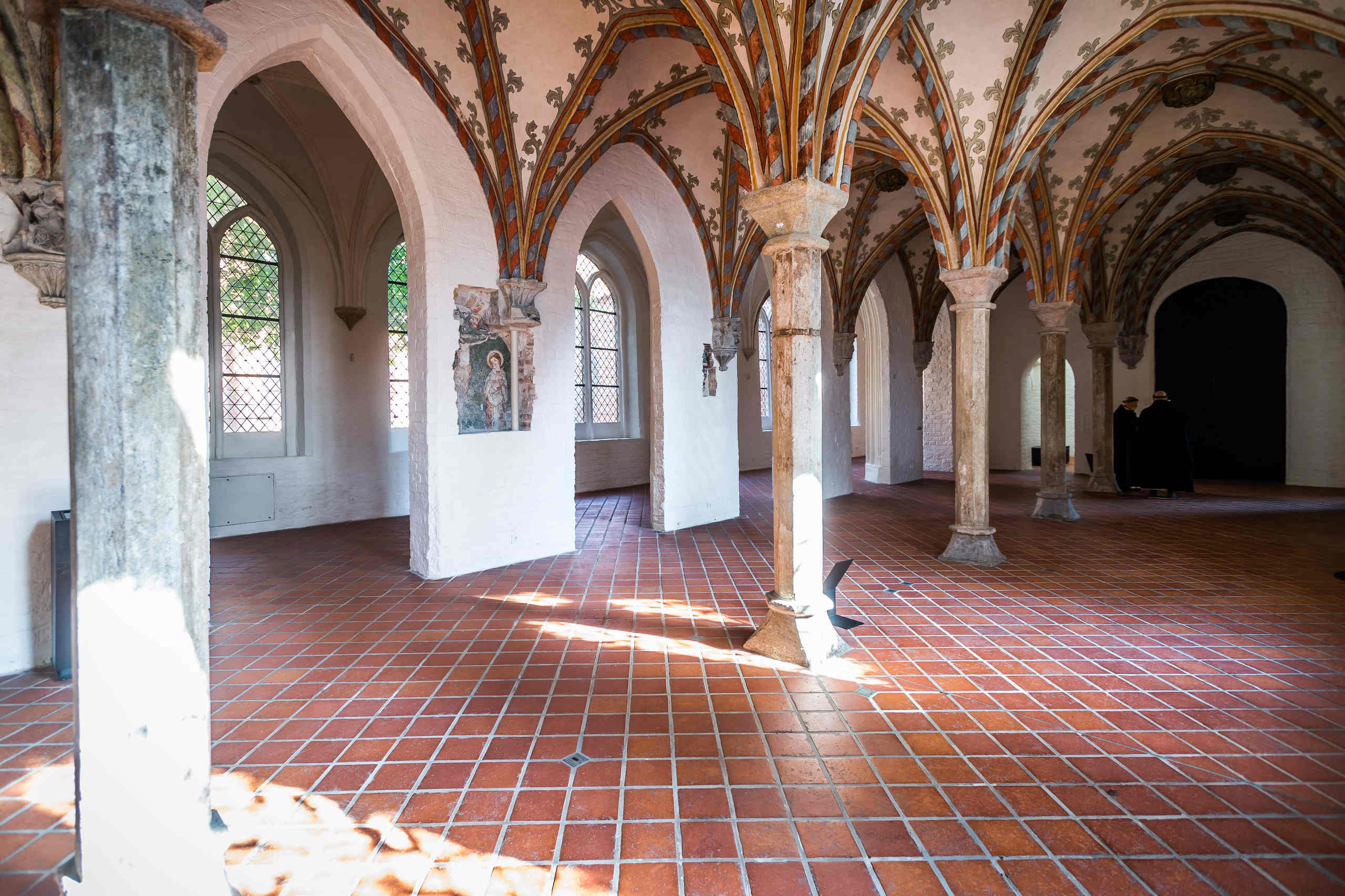How it all began

How it all began
Hanseatic history and modern life behind old walls
Everything began on Bucu hill in the North of the town. This was where the “Queen of the Hanseatic League” was born for it was here that Adolf II von Schauenburg built a castle in 1143 and founded Lübeck as the first German harbour town on the Baltic Sea. In 1229, a monastery was built to replace the castle in the form of a Dominican monastery in honour of its patron saint Maria Magdalena. There were 4 monasteries in Lübeck in the Middle Ages. The Castle Monastery is considered one of the most important medieval monastery complexes in North Germany and forms part of the UNESCO World Heritage Site of Lübeck.
The Castle Gate is Lübeck’s oldest city gate of what were formerly four gates forming part of the medieval town fortifications. Along with the Holsten Gate, it is the only one that has been preserved to this day and still actively used as an entrance to the Old Town. And although it is a few years older than the Holsten Gate, it has always played second fiddle to the Holsten Gate in terms of fame. Quite unjustly as the Castle Gate is full of history and unique stories. As the Gate to the North, even in the 13th century, it guarded the only land link to the “Queen of the Hanseatic League” against invaders as the channel dug between the Wakenitz and the Trave that made the town an island only came several centuries later. It was named after the old castle complex situated high above the Trave that was converted to a monastery in 1227.
The landmarks of the city are even more impressive from the waterside.
> On the water
Until 2011, in addition to the Kulturforum, the archaeological museum with the famous Lübeck coin treasure was located in the Castle monastery. In 2015 the restored Castle monastery was integrated into the modern ensemble of the European Hansemuseum and brought to new life through the exhibition on the history of the Hanseatic trading league. Explore the unique history of the castle monastery on your own or discover the eventful past with the help of an audio guide.
The European Hansemuseum invites you on a thrilling journey through 600 years of Hanseatic history. It tells all you need to know about the former international trading alliance of the Hanseatic League – of the courage of the merchants, life in foreign lands, wealth, pomp and circumstance, piracy, sickness and death. Tip: The roof terrace of the Hansemuseum offers you a magnificent panoramic view over the harbour and in the summer, it represents a social meeting point and a cool event location.
The European Hansemuseum has won multiple awards for its outstanding, modern architecture; among other awards, architect Andreas Heller won the DAM prize in 2017 for the Hansemuseum as a “natural synthesis of archaeology, conservation orders and new architecture with his plausible, fixed staging of the exhibition”. In 2019, Andreas Heller won the Schleswig-Holstein BDA award for the European Hansemuseum. Besides the blending of the new building with the castle hill, the jury praised the way in which the integration of the historical castle monastery with the museum seemed “self-evident”.
Did you know?
To the right of the Castle Gate is the old customs house built of brick in the Renaissance style in 1571. When the nightly locking of the gates was lifted in Lübeck in 1864 and people arriving late were no longer charged an unlocking fee, the customs house lost its original significance and was used for other purposes. Last century, the well-known author Ida Boy-Ed, among others, lived in the customs house for some years as she had been given lifelong right of residence by the city for special achievements. Today, the “Drumburg” is located in the customs house, a drumming school with a music studio which breathes new life into the old walls. Tip: Below the city walls lies the small Ida-Boy-Ed garden that invites visitors to take a break in green surroundings.
Multicultural food in a unique historic ambiance on Koberg
Adjoining the Castle Gate on the left are the stables which also used to be part of the old town fortifications. Lübeck’s police guard was based here and there were stables in the inner courtyard. Today, a modern youth centre with students’ café, concerts and creative workshops bring young life and new energy to the medieval building.

Mo - So